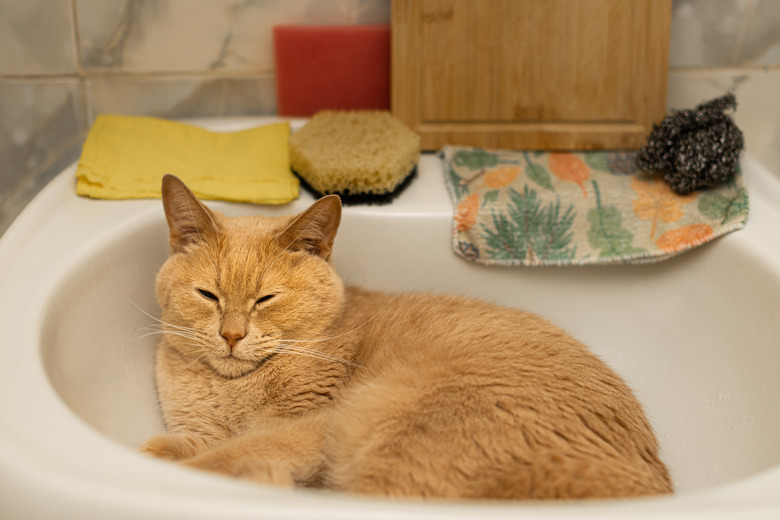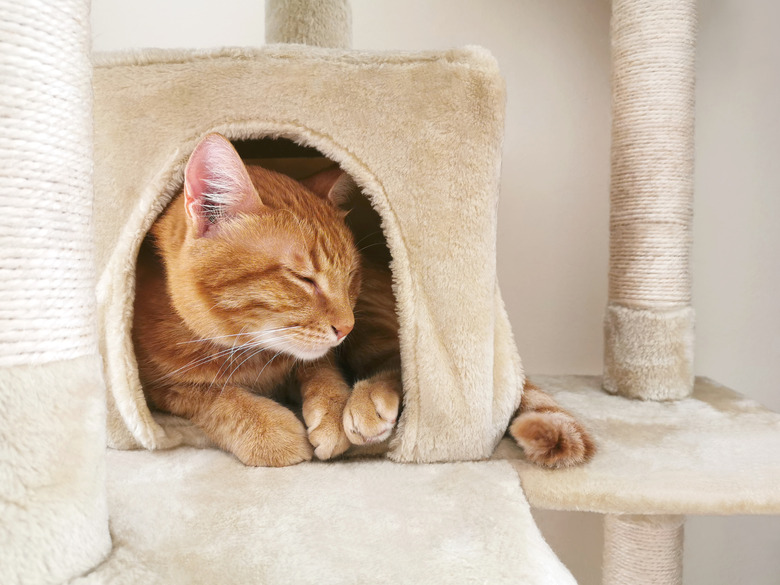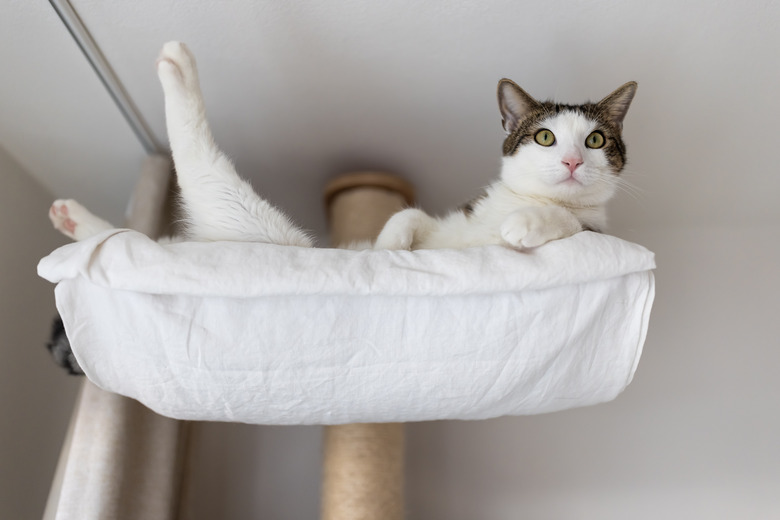Is A Cat Sleeping In Unusual Places A Sign Of Sickness?
Chances are your cat has some favorite sleeping spots. Maybe they sleep in the rocking chair or prefer to be belly up in the sunny spot in front of the sliding glass door. It's a sure bet that you can find your cat in their favorite spots until one day when they've decided to sleep somewhere else. Cats may change their sleeping spots for a number of different reasons, but if their daily cat nap is happening in strange places, this may also signify a health issue.
The sleeping habits of cats
The sleeping habits of cats
It is normal cat behavior for them to sleep a lot. If you're looking for an animal who understands the value of a great sleep, then you only need to look at your cat. Cats can sleep about 15 hours a day, and older cats often sleep up to 20 hours a day. This inclination for sleeping comes from a cat's evolution. Wild cats would hunt and then sleep to conserve energy between their meals.
Although your cat may seem to be in deep sleep a lot of the time, cats are actually snoozing for about three-quarters of the time that they appear to be asleep. When they take a snooze, cats are getting the rest that they need, but they're still alert enough to wake up in just seconds.
You'll see that your cat develops particular sleeping habits in terms of the times and locations where they decide to sleep. However, there are also some factors that may prompt your cat to change their sleeping patterns.
Why cats sleep in weird places
Why cats sleep in weird places
Cats seek different places to sleep out of instinct. In the wild, cats would sleep in different places as a way of varying their routine and protecting themselves from predators. This is the same instinct that prompts mother cats to periodically move their kittens to new locations in an effort to keep them safe. Rotating sleeping spaces in the wild had the added benefit of minimizing fleas and other parasites, keeping the cats healthier.
In the wild, hierarchy among cats came into play, and that instinct continues in today's domesticated cats. Dominant cats claimed their sleeping spots first and would then allow more submissive cats to share those spots with them. A change in the hierarchy would prompt a change in the sleeping spots, so if you bring a new cat into the home, you're likely to see your current cat sleep in different locations.
It is also common for cats in the wild to like to be in high places. This allows them to look around their environment and gives them a sense of safety. So it is common to see a house cat seeking out a nap in a high place like a bookshelf. You might try putting cat beds on top of one to give your furry friends a comfortable sleeping spot they might really enjoy.
Temperature changes affect cat sleeping positions
Temperature changes affect cat sleeping positions
You will probably notice that your cat's sleeping locations often coincide with significant temperature changes. On cooler days, cats love to sleep in the sun that comes in through a window or may curl up in front of the radiator or stove. When the weather gets warmer, your cat will probably seek out cooler places to sleep, like a cool linoleum floor or a breezy bedroom. This behavior is normal and is part of how cats regulate their body heat to keep themselves comfortable.
Strange cat sleeping spots may reflect pain-related sleep changes
A cat sleeping in strange places can indicate that the cat is in pain. A cat who has developed arthritis may seek out softer, more comfortable places to sleep. If a cat is in pain, they may try to avoid contact with humans by sleeping in areas that are hard for you to access, such as under the bed or in a closet. A cat that is in pain may also not cuddle with you as much as they normally do.
Fear-based changes
Fear-based changes
Cats may also change their sleeping locations out of fear. A major stressor, like bringing a new animal into the house, may prompt a cat to seek out safer places to sleep so they aren't sleeping in what feels like (to them) a vulnerable position. For instance, if you bring home a new dog, your cat who normally sleeps on the couch may start sleeping in higher locations, like in a cat tree or on top of a tall piece of furniture. If you are worried that your cat may feel anxious about whatever change is going on, try providing them a cardboard box for a hiding place that also doubles as a new napping spot.
Signs of a sick cat
Signs of a sick cat
While there are plenty of logical reasons behind cats changing up their sleeping areas, a cat sleeping in strange places can also indicate that the cat is sick. If your cat suddenly sleeps in odd locations without any apparent reason behind the change, it may be time to head to the veterinarian.
In addition to seeking out unusual sleeping places, a sick cat may demonstrate changes in their sleep patterns, such as sleeping much more or much less than usual. If your cat suddenly changes from being up during the day to being up all night and vocalizing, they may be indicating that they aren't well by showing these sick cat symptoms. If they usually use the litter box and suddenly start eliminating outside of the box or if your cat is eating litter, these are concerning symptoms, whether or not they accompany a change in sleeping places. Schedule a trip to the veterinarian to get your cat checked out if you have any concerns.
The bottom line
The bottom line
A cat's natural instincts cause them to seek different places to sleep, and this is usually normal behavior. However, if a cat's sleeping locations or sleep habits change for no apparent reason and it is accompanied by behavioral changes, this is an indication that it's time to head to the veterinarian to rule out possible medical causes.


